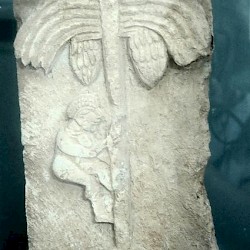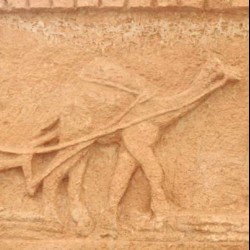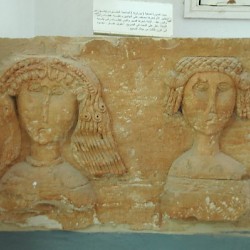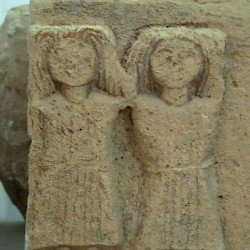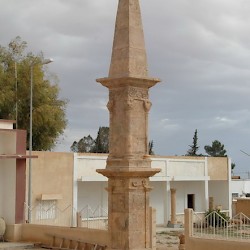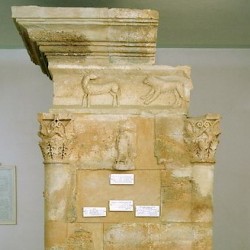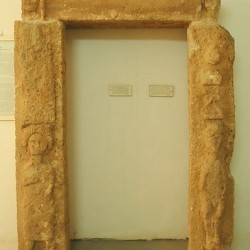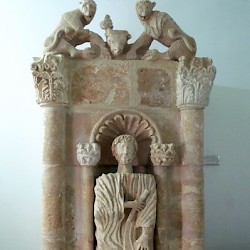Bani Walid
Q244230Bani Walid: Libyan village with a small museum on ancient art.
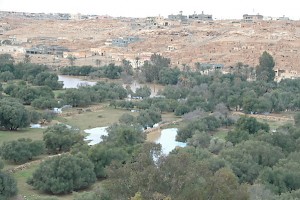
Bani Walid is situated on both banks along the Wadi Merdum, which on the first photo is shown during a flash flood in the winter. The seasonal rains have changed the wadi, usually dry, into a real current. The dams in the wadi are ancient, and were probably built when the Romans developed this area in the third century CE. This was part of the creation of the Limes Tripolitanus.
Other wadis were developed as well (cf. Ghirza), and the land appears to have been quite wealthy. The agricultural products were brought to Lepcis Magna, an important port that became one of the main cities of Roman Africa. Except for the dams and the mausoleums of nearby Msletten, there are no ancient remains visible in modern Bani Walid.
However, the city boasts a small museum, which contains much ancient sculpture from nearby archaeological sites. Many monuments were decorated with agricultural motifs, like a man climbing in a palm tree or a peasant plowing with a dromedary. Motifs like these can be seen everywhere along the Limes Tripolitanus (e.g, the mausoleums of Ghirza). Another common theme is the fish, which can also be found at Qasr Banat. In the semidesert, the symbolism speaks for itself: water, life, eternity.
In the garden of the museum are two ancient olive presses and this obelisk-shaped from Bir Tarsin, which dates - like most other objects on this page - back to the third or fourth century. Similar objects in the museum are from Lepcis Magna, Oea (modern Tripoli), and Ghirza.
The museum is southeast of what was in 2006 and 2008 the only hotel in town. There are reports about looting.
